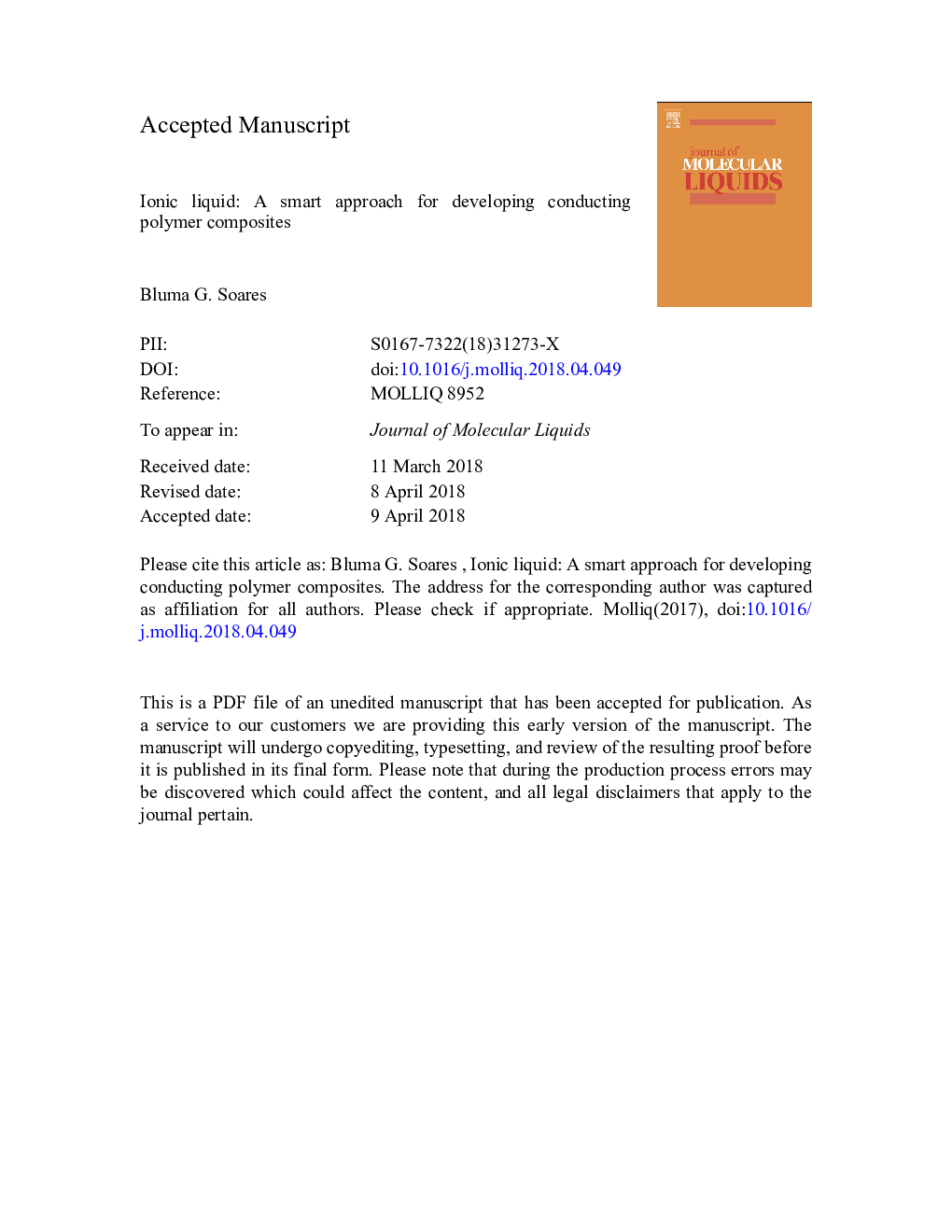| Article ID | Journal | Published Year | Pages | File Type |
|---|---|---|---|---|
| 7842529 | Journal of Molecular Liquids | 2018 | 33 Pages |
Abstract
Conducting polymer composites (CPC) have been received great interest due to the possibility of combining the characteristics of the matrix such as low density, flexibility and processability with the electrical properties of the filler. The main goal in this field is to achieve good level of conductivity with low amount of filler. In this sense, carbon nanomaterials, such as carbon nanotube (CNT) and graphene nanoplatelet (GNP) are promising nanofillers due to their high conductivity, high surface area, and good mechanical strength. In order to achieve a good dispersion and homogeneous distribution of these fillers in a polymer matrix, an appropriate choice of mixing procedure and the surface functionalization of these filler are required. One recent strategy to fulfill these requirements is the use of non covalent functionalization by treating the carbon nanomaterials with ionic liquids. This review highlights the main aspects involving the influence of non covalent functionalization of conducting fillers, especially CNT and GNP, with ionic liquids on the main properties of the corresponding conducting polymer composites. Emphasis was given on the electrical properties of modified CPC based on thermoplastic, thermosetting and elastomer matrices. The continuous research in this field certainly will contribute for the development of new materials with applications in several strategic area including electromagnetic interference shielding materials, supercapacitors, storage energy, sensors, etc.
Related Topics
Physical Sciences and Engineering
Chemistry
Physical and Theoretical Chemistry
Authors
Bluma G. Soares,
